Ground cover are great problem solvers in the garden. In addition, we grow ground-covering plants because we like how they look and because they are easy-care, with a growth habit, both dense and spreading. We enjoy using them to enhance the Eden we all hope to make. Here is how to solve ten garden problems with ground cover.
Ground Cover Defined
The most used definition is low-growing, ground-covering plants with creeping or spreading growth habits that encompass good-sized spaces with minimal need for ongoing maintenance.
There are other ways to solve the problem too. We can use a low-maintenance perennial plant such as a daylily to cover a meadow in an area where height is not a drawback. The flowers create a beautiful view and you’ll never notice that they are protecting your soil and holding it in place.
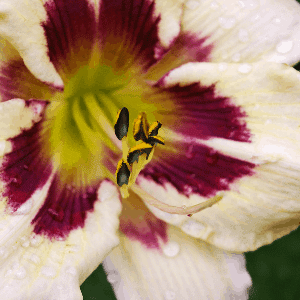
If you think of daylilies as perennials for color and ground covers as low growing, you may not recognize this as a good ground cover.
However, the daylily holds moisture, spreads quickly, and offers many choices of color and pattern. Each plant can produce 50 blooms in a season!
When buying daylilies to use as ground cover, look specifically for the lower-growing plants recommended as ground covers.
Is it ground cover or groundcover? I see both are used.
But There Is No Eden Without A Snake…
In addition, there are no gardens without any problems, and I can think of 10 really annoying problems that can be handily solved with an appropriate ground cover.
Solve 10 Garden Problems With Ground Cover
Here they are; you will recognize at least a few of them.
- Steep Slopes
- Poor Soil
- Exposed Rocks, Boulders, and Tree Roots
- Shady Spots Under Trees
- Weeds
- Cover Exposed Soil, Protect From Temperature Extremes
- Improve Wildlife Habitat-Discourage Wildlife Pests
- Reduce Runoff
- Protect Land From Erosion
- Improve Green Space And Color
This is How It Works
Problem Number 1. Steep Slopes

There are various ways to solve steep slope-soil erosion. Terraces and retaining walls work well. However, in many cases, ground covers are the low-cost solution. This is because their spreading root systems hold soil firmly in place.
Terraces and ground cover plants work well in tandem for erosion-prone places.
The special problem of steep slopes is that the water runs off quickly rather than sinking into the soil. The expected damage and erosion always follow.
Ground-covering plants for slopes need to have specific features. The plants must be able to quickly form a soil-holding mass. Place your plants on the close end of the recommended spacing and water thoroughly the first year.
Ajuga reptans is a fast-growing, colorful ground cover suitable for steep slopes.
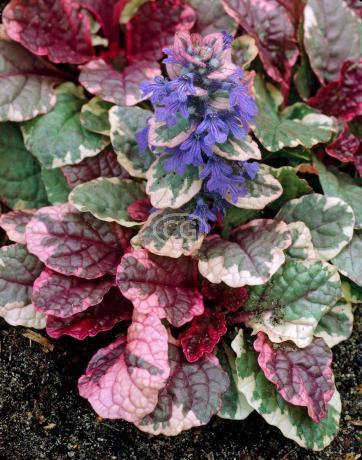
Our Old Hilly Neighborhood
We lived in a hilly neighborhood in the city of Atlanta. (There are only hilly neighborhoods in the city of Atlanta!) Among our neighbors, there were two common solutions to steep front yards.
The Easy Way
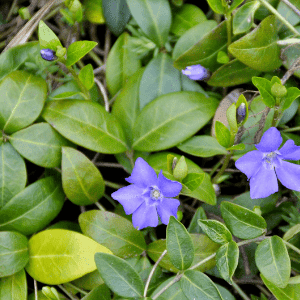
The attractive, easy solution was to cover the sloped area with thick and shiny English Ivy or blue-flowered Periwinkle Vinca minor. These were popular in town, and they were evergreen, hardy, and lovely to look at.
The Hard Way
The second solution was not so slick, but we did see it all over town. The homeowner mows the lawn, then ties a rope to the lawnmower handle and lowers the mower up and down the slope.
We watched this on a daily basis. Observing the activity ranged from entertaining to absolutely terrifying.
Problem Number 2. Poor Soil
Problem soil takes many forms, sand, which holds few nutrients; heavy clay, which consists of fine mineral particles and not much organic matter. Turf or most perennial plants will require considerable improvements to poor soil in order to thrive.
There are ground-covering plants that will reach and spread to cover this soil. For sandy soil, depending on your planting zone consider these. Try Salvia (listed for zone 3-9; also, we have good luck with it in Zone 10), Black-Eyed Susan (zone 4-9), Lavender (zone 6-9), and Butterfly Weed (zone 4-10).
In Florida’s sandy soil, this beach daisy will grow in pure sand! Check for locally prolific ground covers in your area.
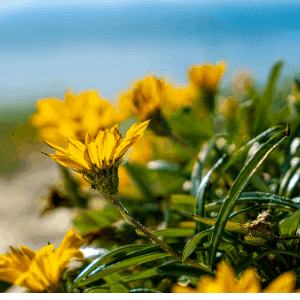
If you have sandy soil and a part sun location with good drainage, Liriope is a good choice and is lower to the ground than many of the others. (Zone 5-10).
If your garden has clay soil, you can also consider Liriope, and also Daylily, Coneflower, Bee Balm, and Black-Eyed Susan.
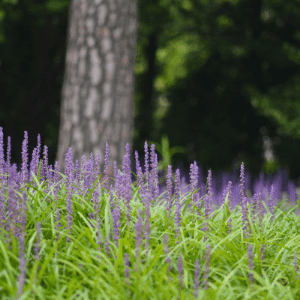
Liriope is a proven ground cover for poor soil and shaded areas under trees. Liriope prefers fertile, well-drained soil but will accept sandy and clay soil as long as the soil is not soggy. It is drought tolerant when established, and you can separate the mature clumps and cover more territory over time.
For more useful detail, see “Liriope vs. Mondo Grass.
Problem Number 3. Exposed Rocks, Boulders, or Tree Roots.
This is a perfect opportunity to add color and protect the soil by using the creeping and spreading nature of groundcovers. Choose the colors and sizes you like the look of. The ground cover will spread and encircle the stones which will become an attractive feature rather than a problem.
Problem Number 4. Shady Spots Under Trees
Turf under trees will always struggle to survive. You can keep the green look going by adding one of the green ground covers in the area under the tree. Mark the shade space with your garden hose, string, or landscape painting. Remove the remaining turf and plant your choice of ground cover. Some good ideas include Ajuga, Lungwort, Foamflower, Liriope, Periwinkle, Mondo Grass, or Hosta.
This article discusses using mini hosta as a ground cover. I thought it was interesting.
Hosta comes, as you can see, in tremendous variety. You can find varieties of blue and lavender or bright yellow color schemes.
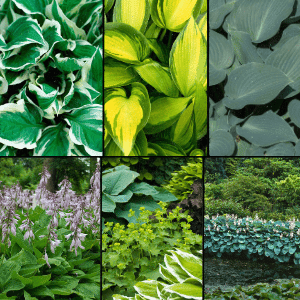
Problem Number 5: Weeds
A good layer of mulch will slow down the weeds, but nothing is as discouraging to a weed crop as the creeping, spreading, rooting nature of many groundcovers. Consider Pachysandra, Asiatic Jasmine, Liriope, or Periwinkle.
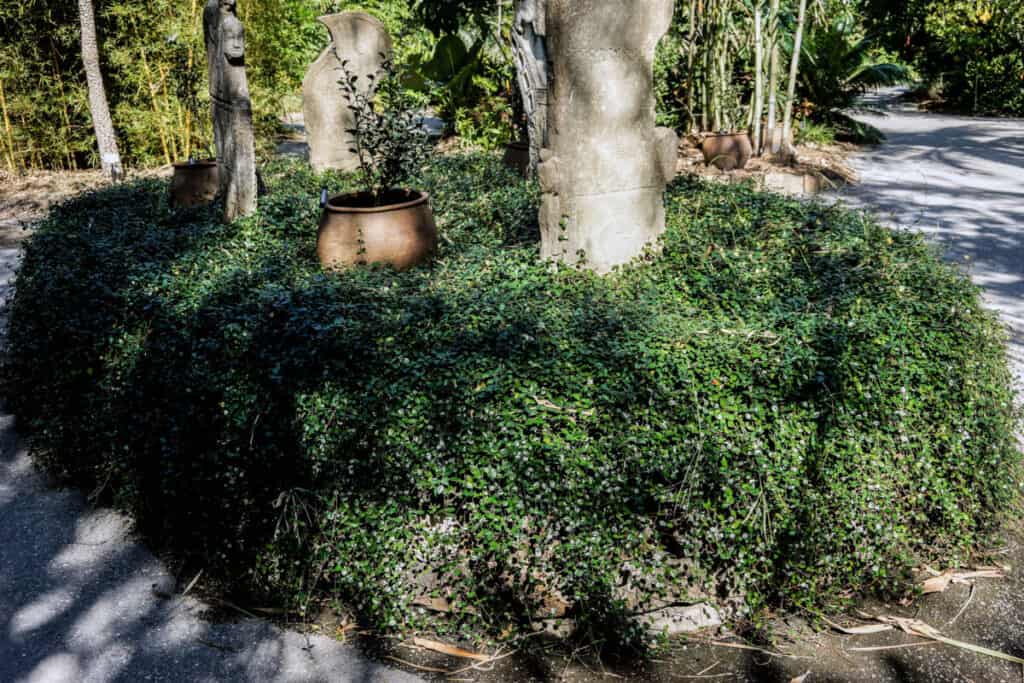
A good layer of mulch will slow down the weeds, but nothing is as discouraging to a weed crop as the spreading, rooting nature of many groundcovers. Consider pachysandra, Asiatic jasmine, liriope, or periwinkle.
‘How to Add a Beautiful Green Ground Cover-Asiatic Jasmine.’
Problem Number 6: Cover Exposed Soil, Protect It From Extreme Temperature
In a healthy garden, you should need to make an effort to find your soil. It should be covered. Healthy soil is filled with microorganisms. They need food and cover to survive. A vegetative cover offers food and shelter. Bare soil is also subject to erosion from weather such as rain and ice or human activity.
Ground-covering plants of any size will prevent soil damage. You can use Daylilies for height and color with steady coverage of the soil. If you want something low, a creeping groundcover such as Dwarf Mondo Grass or Periwinkle will protect the soil while being decorative.
Problem Number 7: Improve Wildlife Habitat
Ground Covers to Attract Pollinators
Here are some options in various hardiness zones. Zone 4-8, Cinquefoil (Potentilla neumanianna) is a low, drought-tolerant creeping plant. It has a yellow flower that pollinators love and is a good plant for places such as between paving stones.
Zone 9-11-Bulbine (Bulbine frutescens) Butterflies are attracted to orange or yellow flowers. The plant grows about 2′ tall.
Ground Covers to Attract Birds and Mammals
(Zone 2-6) Bearberry (Arctostaphylos uva-ursi) Birds, small mammals, and, yes, even bears love the red berries of this creeping perennial. This and its relatives are common in subarctic North America.
Zone 4-8-Salvia silvestris, called sage, is appealing to hummingbirds, sparrows, and finches.
Lovely To Look At-Impossible To Feed-Ground Cover to Discourage Deer and Rabbits!
We all have neighbors like this, and many of them are deer and rabbits. We need plants we will love but they will not. That is the problem.
What do they dislike?
These categories of plant life are the most disliked by deer and rabbits.
- Toxic plants-the animals discover these by scent and taste.
- The aroma and fragrance-many scents that we appreciate in the garden and seem modest to us are unappealing to wildlife. Juniper and anything in the onion family makes good examples. We grow a pretty variegated Cuban Oregano. It is useful in the kitchen, and easy to propagate and grow. Wildlife does not like its strong, aromatic scent.
- Foliage, which is fuzzy or hairy,
The caveat- it depends on how big the herds are and how hungry they are. Plants with the features above will be resisted until the bitter end…but.
This is a project to landscape an area in which ground cover that would be unattractive to rabbits was needed, here is how the project worked out.
‘How to Find a Low-Maintenance Ground Cover Rabbits Won’t Love.’
Problem 8: Reduce Runoff
Runoff is rain that cannot be completely absorbed by the ground on which it falls. For this job, the ideal plant is creeping, fast-growing, and has fibrous roots. A good example is Golden Creeping Thyme (Thymus x citriodoras). It has a fibrous root system, grows fast, and has a pleasant scent.
Reducing runoff delays the discharge of rainwater to the sewage system, cleans the rainwater, and allows evaporation through the plants, and thus reducing flooding.
Problem 9: Protect Land From Erosion
Soil Erosion is the wearing away of topsoil for various reasons. Water runoff is a prime contributor. The kind of plant that can control the damage is fast-growing with net-like roots. Successful examples are Pachysandra, Periwinkle, and Mondo Grass. If you have a place that can use a little drama, consider Black Mondo Grass. It is very effective combined with shades of blue, pink, white, and purple.
Problem 10: Improve Green Space Or Add Color
In the list of ground-covering plants, are many that will thrive in shaded areas where many other plants will not grow. Once established, they tend to be drought-tolerant, they grow in poor soil, and there are varieties for all hardiness zones and sun/shade conditions.
Many plants in the category provide year-round green color. In those places where nothing else will grow, this is a solution to otherwise insurmountable problems.
Ground Covers Are Problem Solvers But Can They Cause Them?
Yes, no garden solution is perfect. In some places perfectly desirable ground covers are invasive. English Ivy, a beautiful plant is a good example as it is unattractive to damaging pests. In southern gardens the beautiful Liriope can be invasive. However there are two types of liriope, clumping and spreading, we use the clumping variety.
Weeds: ground covers will control most weed problems, but not all. It is best to periodically weed your ground cover beds. With healthy mature ground covers you should weed a lot less, but not never.
‘Liriope vs. Mondo Grass’ will address the liriope issues.
Check with your local county extension service, your closest public garden and your best local garden center. They will know local issues if you do not.
Summary,
I have chosen to highlight ten common garden problems, but groundcovers are beneficial in many other ways. Ground covers, in heat, can reduce the ambient temperature as plants absorb sunlight. In Urban areas, they can also reduce noise.
Ground covers improve air quality as plants filter particulates from the air and convert C02 to sunlight.
Ground-covering plant materials can contribute all this to our garden life while softening hard edges and adding visual interest throughout the garden.
If you need to solve some of these problems in your garden, here is some more information to help.
Types of Soil and How to Improve It..
How To Plant Groundcovers with a list of groundcovers to choose from, including their important features.
Find a Low Maintenance Groundcover That We Iove And the Rabbits Do Not
Ground Cover plants solve a lot of problems that turf cannot handle but some of them will be eaten by rabbits and sometimes deer. This will help you identify features of plants that can help deter garden pests.
Specific Groundcovers
Asiatic Jasmine Try this piece if you like the low nature (6″ Tall) and shiny leathery leaves of this plant.
Liriope and Mondo Grass Read this if you think you might like to use these two plants. There are choices of color and size.
Daylily. This piece discusses choosing, planting, and maintaining daylilies.
This is the University of Florida’s summary page on ground cover research and offers more specialized articles. Use your own state Agricultural University Research. You can access it online or by calling your county agricultural Extension Service. Here is how to find it.
For an update on using the ground cover area:
‘January in the South Florida Garden.’
